Agile vs waterfall methodologies: what's the difference?
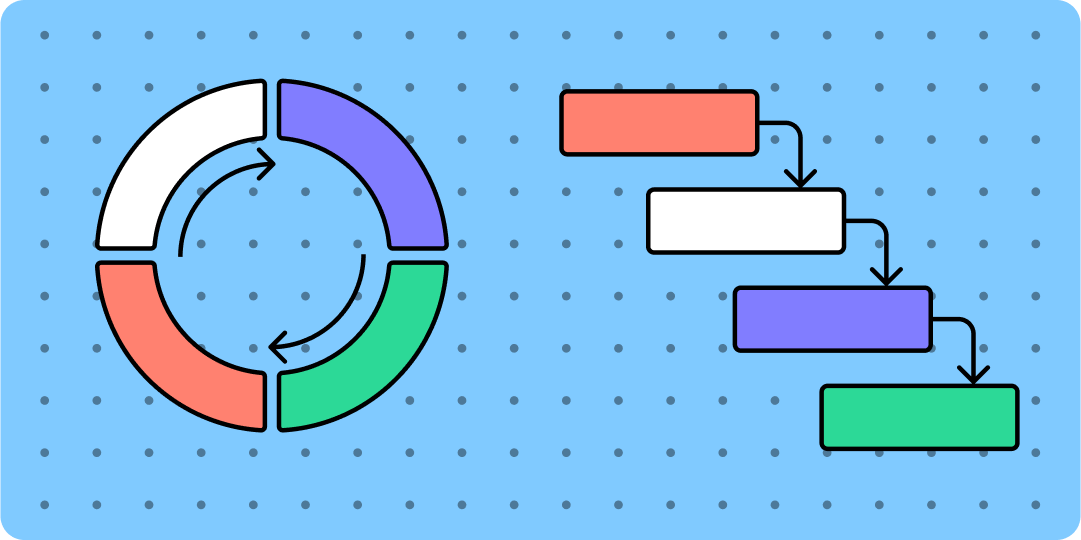
To plan, execute, and guide product design and development from concept to launch, many teams choose between two popular project management methodologies: agile and waterfall. Which is the right choice for your team? That depends on the type of project you’re working on.
If your project requirements are clearly defined and your process well-established, then waterfall may suit your needs. However, if your requirements change rapidly and continuous feedback is essential, then agile may be a better fit. This article compares the pros and cons of agile and waterfall methodologies, so you can see which approach is best for your project.
What is agile methodology?
Agile methodology focuses on making continuous product improvements during design and development. With agile, teams split their work into manageable, two- to four-week cycles called sprints. Project work often runs in parallel—development and QA testing often take place at the same time.
This flexible approach to project management supports teams that:
- Value discovery and trial and error while designing and developing products
- Make changes often throughout the project, based on their discoveries
- Rely on constant feedback from key stakeholders, including customers
- Work on tight project timelines
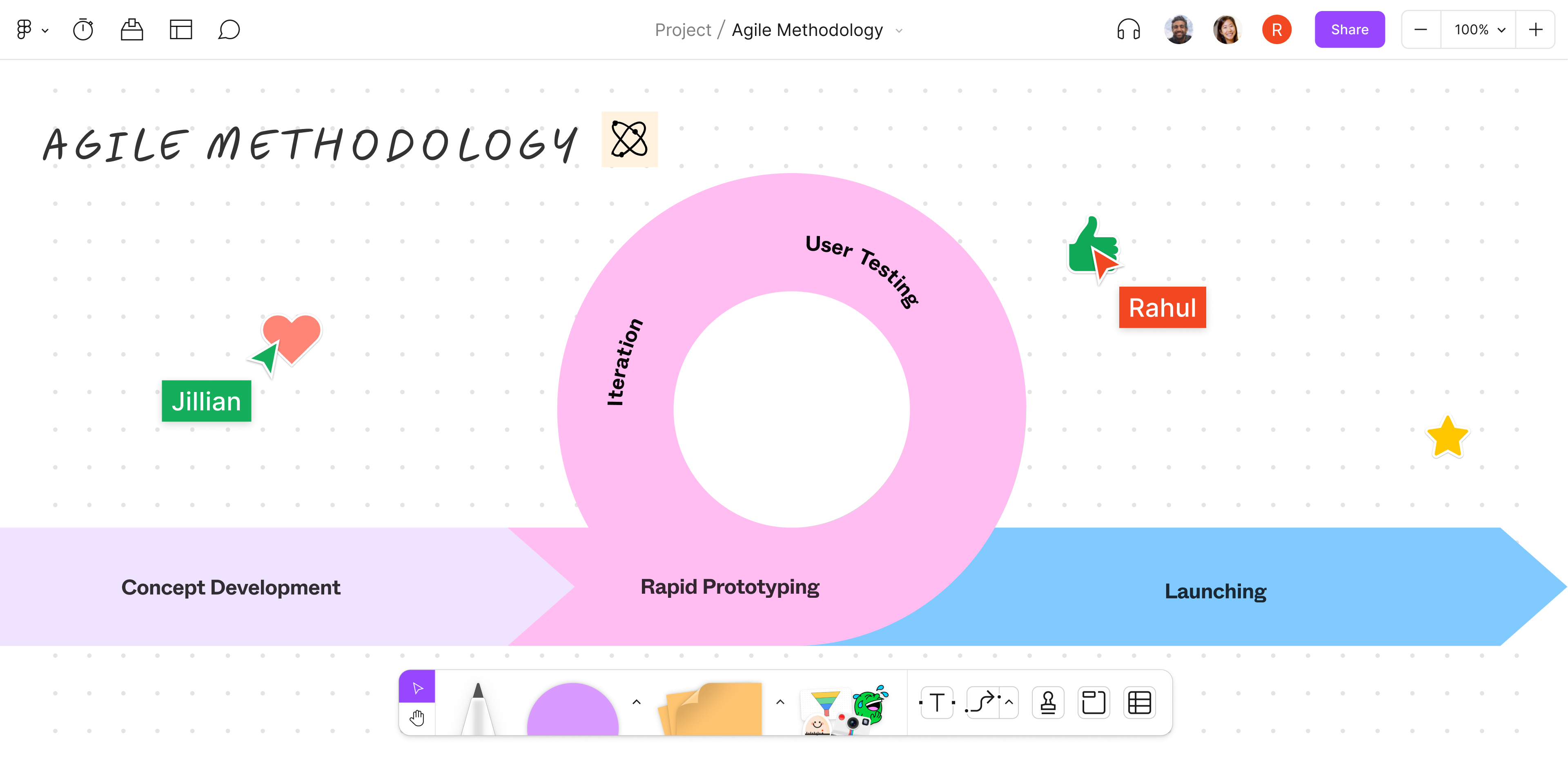
Benefits of agile
Agile encourages experimentation to achieve customer satisfaction, through:
- Effective collaboration Agile fosters better team alignment. Designers, developers, and product and business owners work closely together.
- Adaptability Teams can quickly respond to changing requirements and incorporate feedback to create a better product.
- User-centered design Agile plugs user and stakeholder feedback into the process to better meet user needs.
- Problem-solving on the fly Since QA occurs alongside agile development, teams can quickly find and fix problems along the way.
- Efficient workflows An agile-based project consists of several bite-sized sprints. These short work cycles can help teams stay motivated and productive.
5 main agile activities
The agile process is supported by five key activities:
- Concept development Stakeholders and team members brainstorm ideas to create a compelling concept, defining user vision, product features, business and quality objectives, and key players.
- Rapid prototyping Designers and developers build low-fidelity prototypes to test and validate design ideas.
- User testing Teams gather feedback from trial users, business owners, and other key players to help improve the product.
- Iteration Based on user testing results, teams keep refining the product, internal processes, and project objectives.
- Product launch The product gets released to end users. Because agile is an ever-evolving process, this isn’t the end of the line. After launch, the cycle starts again.
Learn more about how teams use FigJam
FigJam is used by teams across the world for their agile workflows. Find out how.
What is a waterfall methodology?
In a waterfall methodology, work gets done in a sequence of phases. Each phase must get completed before the next phase can begin.
This linear approach flows like a waterfall, and works best for teams that:
- Don’t have limited budget or time allotted to design and development
- Have well-defined requirements that won’t change throughout the project
- Are subject to regulation and/or specific product requirements
- Aim to standardize workflows so they can keep repeating them
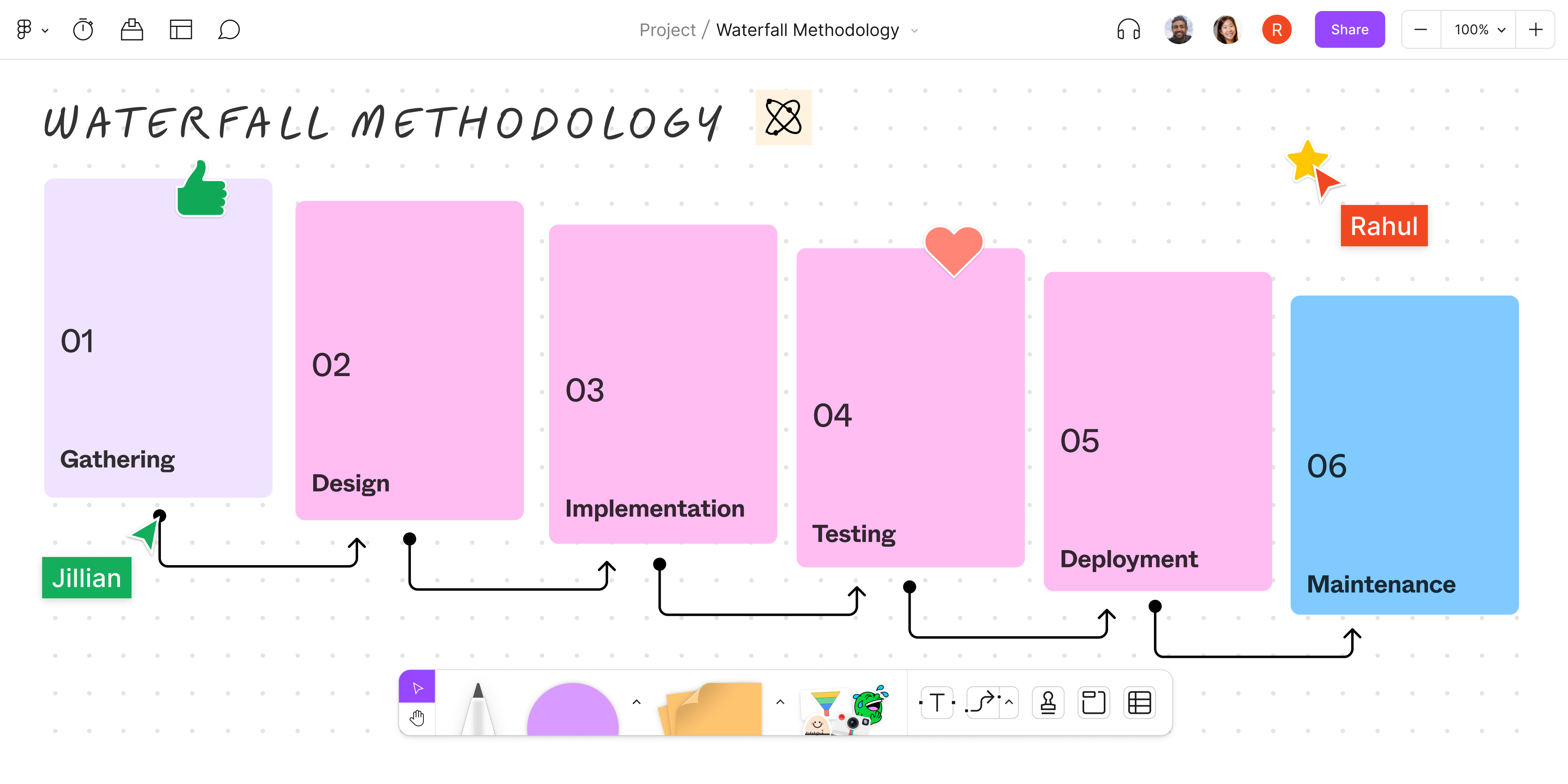
Benefits of waterfall
Waterfall is a highly structured approach to get your products to market, offering:
- Project clarity Well-defined phases and milestones can help teams stay on track, completing steps in a systematic and organized way.
- Smarter planning With each phase building on the previous one, teams can easily plan and schedule their work against a sequential, predictable timeline.
- Team empowerment Detailed documentation at every stage empowers teams to build products to spec, and makes onboarding new team members a lot easier.
- Rigorous quality control Thorough testing helps teams identify and address any issues before a product’s release, ensuring that quality levels meet high regulatory standards.
Waterfall methodology in 6 steps
Waterfall project management typically goes like this:
- Requirements gathering This includes collecting information about the design problem, defining solution requirements, and outlining the project phases. Budget, resources, and project timelines are finalized in this phase.
- Design The creative process begins here, from brainstorming ideas to coming up with drawings and specifications. The end result is a detailed design solution.
- Implementation Developers use the design specifications to build the product.
- Testing The quality assurance team tests each element and feature to make sure the product is free of bugs or errors.
- Deployment and delivery Once the product works as expected according to design specs, teams can roll the product out to its intended users.
- Maintenance Once the product is on the market, users may ask for new features. Any bugs reported may require periodic product updates.
Agile vs. waterfall methodology
Here's how the two approaches compare at a glance.
Waterfall
- Linear Project phases follow a linear or sequential workflow, requiring teams to complete a phase before starting the next one.
- Rigid Requirements and goals are cemented from the get-go, so updates must wait until after the product’s release.
- Closed Waterfall doesn’t allow for customer or key stakeholder input until after the product hits the market.
- Systematic A highly detailed plan irons out the activities, players, deadlines, and deliverables required to keep a project organized and on track.
Agile
- Iterative The focus is on continuous improvement. Activities like development and testing can take place at the same time.
- Flexible Agile supports a steady stream of revisions and updates throughout the design and development process.
- Open Customer feedback loops help optimize the product before its release.
- Adaptable Agile rolls planning, design, implementation, and testing into each sprint cycle to allow for rapid changes in direction based on new information.
Get started on agile and waterfall project management with FigJam
To compare your options side by side, you can use FigJam’s online collaborative whiteboard and ready-made templates to plan and manage your projects with ease.
- For agile, OKR, agile roadmap, and sprint planning templates will get you started.
- For waterfall, use our Gantt chart maker, RACI matrix, and project plan templates to lay the groundwork.
Want to see what other teams are doing? Explore a wide range of project planning and agile templates built by the Figma community.
Ready to kick off your own project?
Sources
[1] https://www.cio.com/article/194093/agile-vs-waterfall-project-methodologies-compared.html
[2] https://www.agilealliance.org/agile101/
[3] https://agilemanifesto.org/principles.html
[4] https://www.forbes.com/advisor/business/what-is-waterfall-methodology/
[5] https://www.techtarget.com/searchsoftwarequality/definition/waterfall-model
[6] https://study.com/learn/lesson/waterfall-model-definition-phases-examples.html
Keep reading
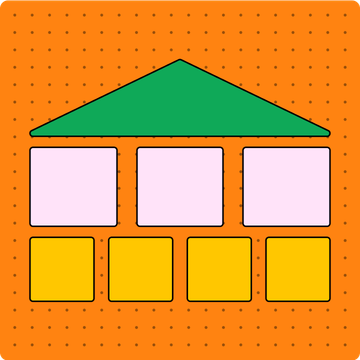
What is the strategic management process
Every company needs an in-depth plan to stay ahead of market shifts—and their competition.
Mehr erfahren
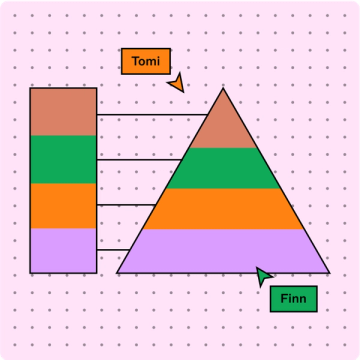
Strategic vs. tactical planning
While strategic planning involves big-picture thinking, tactical planning covers the nitty-gritty of turning strategy into action.
Mehr erfahren

What is a strategy map
A strategy map is a visual representation of how a company can achieve their long-term goals and objectives.
Mehr erfahren




